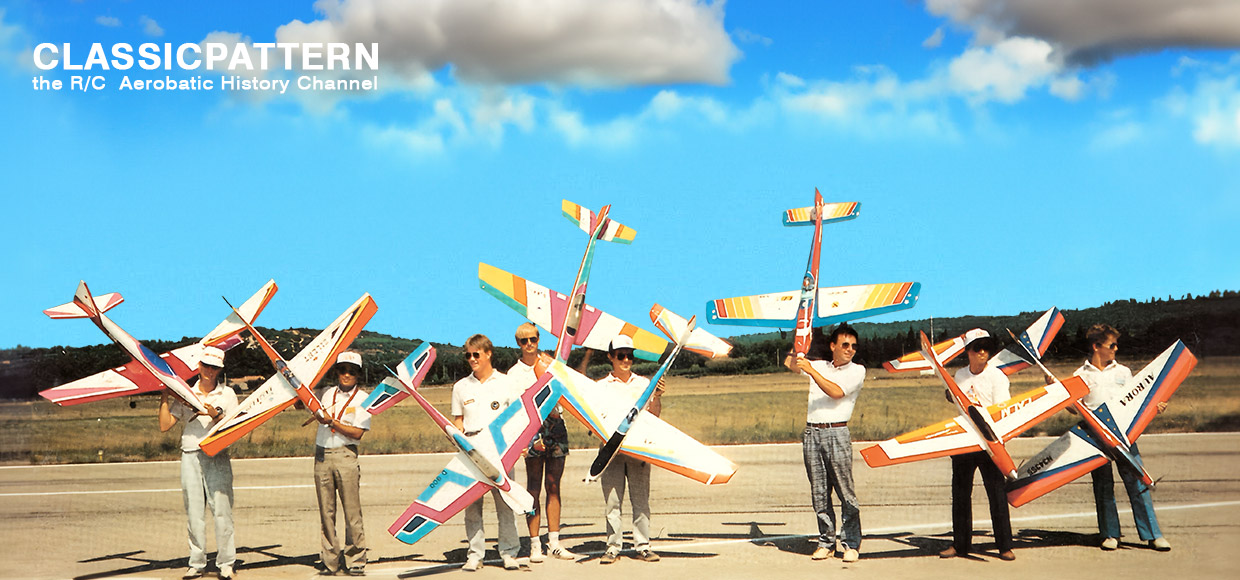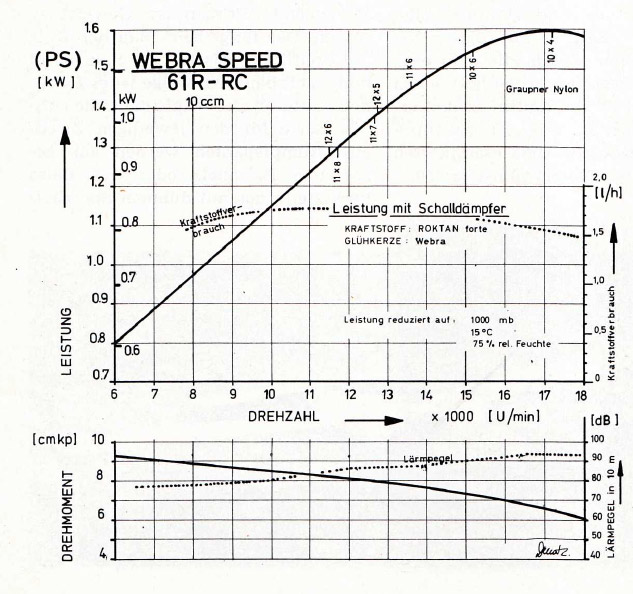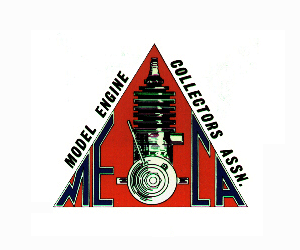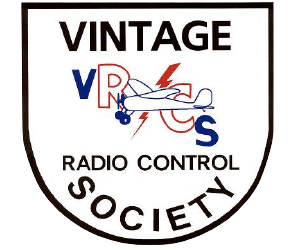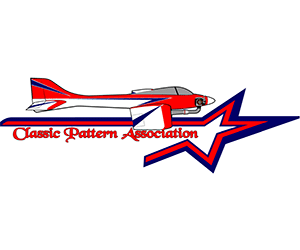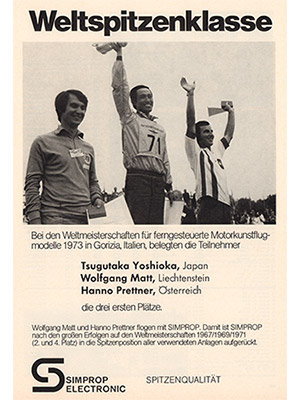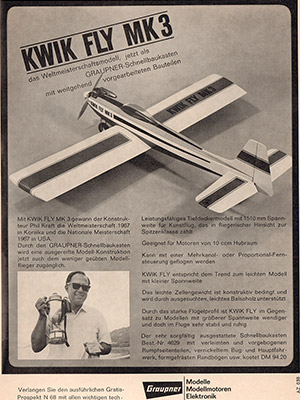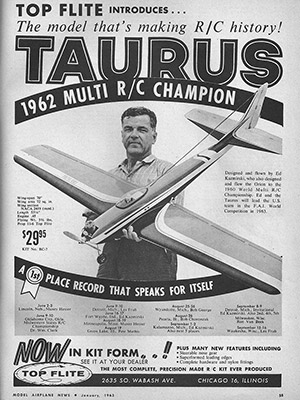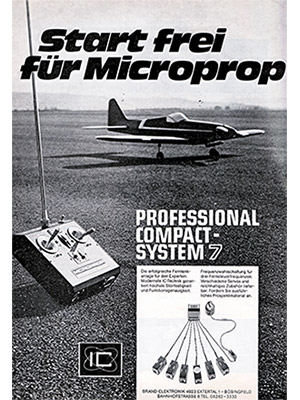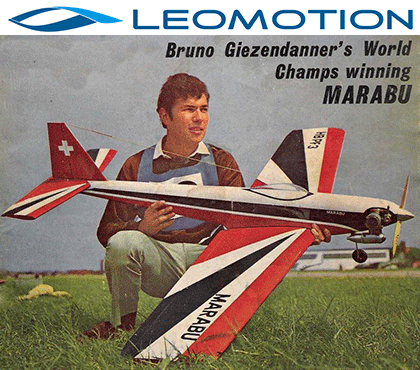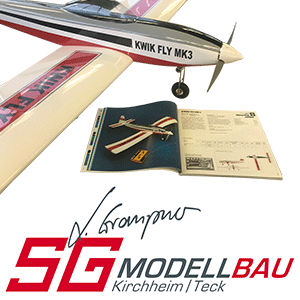In all, there are now six different Webra 61 R/C engines. Two of them, the Blackhead 61 and Blackhead 61 Marine water-cooled unit, are products of the original Webra factory in Berlin.
The other four, made in Webra`s Austrian factory at Enzesfeld and of quite different design, are the so-called Speed series. first introduced as a front intake (shaft valve) model and now obtainable in a rear rotary disk valve version. Both of these are mode in water-cooled versions also.
The standard front intake Speed-61 disk-valve engine. M.A.N. Engine Review for March, 1974; our present report deals with the Speed-61R disk-valve engine. Compared with the standard Speed 61 Hereinafter referred to as the 6IF) the 6IR is longer and heavier and is less likely to drop in to the average model airframe easily, but it does have a slight edge on the 61F in terms of top end performance.
On test, the Speed-6IR returned the highest peak output of any FAI 10cc.class R/C engine tested up to the end of 1074. Whether it can hang on this distinction through 1975 depends an how certain, promising, new rivals show up, but there is no question that Webra is one of the most powerful throttle-equipped .60 cu.in. engines at the present time.
As its appearance suggests, the 61R is based on the cylinder components of the 61F but with new front and back end assemblies. Taking the cylinder axis (or mounting lugs) as a reference, the frontal overhang is the same as on the 61F, but the 61R requires an extra 1 ¼” to 1 ½” behind the cylinder to accommodate the rear carburetor and avoid having the firewall mask as intake.
Front housing and shaft assembly. The pressure –diecast, aluminum alloy front housing has similar external dimensions to those of the 61F but, of course, is without the latter`s intake boss and valve aperture and is different internally. As befits a rear induction motor, the crankshaft main journal is reduce from 15mm o.d. to 12mm., but the pressed-in solid crankpin is now 7 mm. dia. instead of 6 mm., with a short 4 mm. dia. integral spigot for the rotary-valve drive. The crankweb has a thickness of 8,9mm, and counterbalancing is by cutaways each side of the crankpin. The shaft runs in a 12 x 28 x 8mm 8-ball, brass-caged, ball journal bearing at the rear and a 3/8” x 7/8” x 7/32” 8-ball, steel caged bearing at the front. The latter is set back 2mm, from the front on the bearing housing where it is protected by the rear face of the machined aluminum prop driver. The driver is fitted to the shaft with a 2.5mm square sunk key, and ahead of it the shaft steps down to ¼” dia. And a standard ¼” UNF thread for the prop nut.
The complete front housing unit is fastened to the crankcase by means of the usual flange type fitting, with four 3.5mm socket head cap screws and a paper gasket.
Main Casting and cylinder liner. These components are the same as those used by the 6IF. The casting consists of a full length cylinder-block in unit with a barrel type crankcase. It has cast-in bypass and third-port passages, a short exhaust stack, beam mounting lugs and ample cooling fin area.
The hardened steel cylinder –liner is firmly fitted into the casting, located by the usual upper flange. The Schnuerle scavenge porting system consists of a centrally bridged exhaust port, timed open and close 70° each side of bottom dead center, with the usual arrangement of angled fore aft bypass ports, timed 59° each side of BDC and an upwardly inclined third Port, open for 55° each side of BDC. (All Timings measured from the test sample.)
Piston and conrod assembly. Small changes have been made to the piston since our report on the Speed-61F. The forged silicon-aluminum piston is slightly modified internally and is fractionally lighter at 10.7 gr., or 13.5 gr. complete with its 6mm o.d. tubular wristpin. The 6IR also has an improved, forged connecting rod with a stronger, tapered shank and a larger lower eye to fit the engine’s larger crankpin. As before, the rod is bronze bushed with oil slits at both ends and is 39 mm between centers. The new rod weighs 5.3 gr, making a total of 18.8 gr for die complete piston and rod assembly. Unchanged are the single, pinned piston-ring, the method of retaining the wristpin (by wire snap rings) and the piston skirt design, which has an an oblong third-port window and rectangular cutaways to avoid obstructing bypass entry at the bottom of the stroke.
Cylinder head. The finned pressure diecast head is unchanged. The combustion chamber features a fairly shallow central bowl, surrounded by a machined squish band 4mm wide. The head is secured to the cylinder casing with six socket-head 3.5mm cap screws, and the test motor was not fitted with a gasket, although aluminum gaskets are available. Measured combustion chamber volume was 0.97 ml giving a nominal geometric compression ratio of approximately 11.3 1.
Induction assembly. This comprises a pressure diecast backplate incorporating the rotary valve on the inside and the carburetor boss on the outside. The valve rotor is of the type first seen several years ago in the Super Tigre rear valve engines and consists of a thin (2mm) counterbalanced, hardened and ground steel disk but is mounted on a 5mm dia. Bronze pin instead of a hardened steel one. This is pressed into the backplate and locked by a socket-head grub screw.
The carburetor intake boss projects 6mm from the rear of the backplate, has a 13mm bore and is fitted with a set screw to retain the carburetor. The intake port through the backplate starts at 11.2mm dia. and diverges smoothly to a quadrant shaped port at the rotary valve. The complete backplate unit is bolted to the crankcase with four 3.5mm socket head cap screws, the joint surface being sealed with a thin paper gasket.
Incidentally, the valve disk has what might appear to be a second pick-up hole. However, its purpose is merely to assist in counterbalancing, since its position does not provide suitable timing for counter-rotation.
Carburetor. This is a Webra TN type and is identical to the 61F version except for having the throttle arm (which is fixed) relocated to suit normal fore and aft push-pull movement with the intake in the horizontal position. It has an 8mm choke and an effective choke area of approximately 35 sq. mm.
Muffler. Supplied with our test motor was a Webra vented front type muffler, similar to that used for tests on the 6IF Met but with smaller diameter vent tube and smaller i.d. outlet. Actual sizes were 13 mm i.d. and 9.5mm i.d. respectively, instead of 15mm and 10 mm. Although this results in a 20% reduction, the total escape area is still very large at 204mm. The muffler is fitted with a brass nipple for a fuel pressurization system but does not have a priming nozzle.
The strap fitting is an Italian Serratus worm-drive, hose-clip pattern, and the muffler simply butts against the exhaust stack. This has the merit of allowing some movement in the event of a crash, thereby reducing the risk of damage to the engine. The fitting is, nevertheless, quite secure as, unlike some motors, the even cylindrical shape of the finned cylinder casting helps hold the strap in position without overtightening and the attendant risk of distorting the cylinder.
Performance. The relatively high compression-ratio of the Webra Speed 61 engines makes them eminently suitable for operation on mild fuels, including a straight alcohol / castor oil blend. The manufacturer`s suggested mix is 3% nitromethane, 20% castor oil and 77% methanol. We raised the nitro content to 5% to bring the mixture into line with our standard R/C test fuel, after having first broken-in the Speed -61R on the straight 3:1 methanol/castor oil fuel.
Not unexpectedly, initial impressions of the handling and running qualities and general performance of the Speed-61R closely matched those previously noted for the 61F. In other words, piston seal was good, providing excellent starting both hot and cold. Running was smooth and even, and the power available on the bigger prop sizes (e.g. 9,500rpm on a 14×6 Top Flite maple, 11,200 on a 13x 5 ½, 12,000 on a 12×6) was outstanding, thanks to the considerably higher torque levels resulting from the efficient Schnuerle scavenging system. As we remarked in our report on the Speed-61, this must make the Webra Speed a favorable solution to the problem of finding a motor, within the 10cc displacement limit, with the power to fly FAI Scale models that are near 11lb limit and of high wing loading.
The location of the carburetor on the 61R at the rear of the engine, safely removed from the vicinity of the prop, obviously makes for somewhat more comfortable operation of the needle valve etc., but there is an installation snag in that, with the needle-valve control in the normal horizontal position, left or right, some part of the carb inevitably gets in the way of the engines bearers. This calls for either the modification of the bearers or relocating the needle-valve control vertically or at an angle. The latter solution, at least, is made easy by the fact that the carb. Can be rotated in the backplate through a full 360°.
This brings us the one fault encountered with our test motor. lt concerned the throttle barrel whith because of a machining error (cam slot too long), rotated beyond the fully open position and half-closed the throttle again. This was not noticed prior for testing the engine because of a slight stiffness in the barrel (due to the cam slot guide screw being set up a little too tightly at the factory) which initially cuased the throttle to rotate – quite fortuitously – only as far as the normal fully open position. All went well until, when checking prop speeds, we were suddenly aware that the expected level of “full Throttle” performance on a 11×7 prop was down by about 400rpm.
Since the carb intake faces rewards and its interior is not easily visible, the cause of the trouble was only apparent after the engine had been removed from its mound. As luck would have it, a spare carburetor, supplied with the 61R, was found to have exactly the same fault. Several 61F and (Blackhead) carbs were examined and found to be okay, but these have the throttle arm located for upright installation and therefore, the only solution, was to fix the 61R throttle barrel in the fully open Position to enable the performance tests to be completed. This was done, and no further problem was encountered. In all other respects the throttle worked well, with reliable idling and a progressive, mid-range response.
Torque tests revealed that compared with the 61R, the 61R was only very slightly, more powerful when loaded for Speeds below 13,000 rpm, but whereas 61F`s bhp curve had begun to flatten out at this point, to peak at 15,000 rpm, the 61R curve continued to climb to peak at 16,500 rpm with an output of better than 1.6 bhp or about 8% more power than the 61F.
In Practical terms this means that, on the ground, using, say, an 11×8 or 11×7 prop, the 61R is unlikely to be noticeably more powerful than the 61F. But in the air, as forward movement reduces the load on the prop blades and the engine speeds up, the 61R is likely to be about 400 rpm faster in the air.
These figures refer to the gross output, less muffler. With the muffler, the test results were slightly different. Compared with the 61F, which showed only a very smart top end Power loss when tested with its muffler, the 61R revealed a slightly greater Power loss with its muffler, and although this was of the order of only 8% to 9% in peak power, it was sufficient to reduce the peak output of the 61R to approximately the same as that of the 61F. Presumably this greater power loss experienced with the 61R was attributable in part to the later muffler`s 20% smaller escape area already mentioned. Therefore, one would expect that using the same muffler on both engines would restore some of the differential in favor of the 61R. Having said all this, it is only fair to remark that the differences between the two engines – in terms of usable power output – were really very small indeed. Unless the prospective purchaser plans to prop his motor sufficiently accurately to extract the last ounce of power from the engine, it may well be that he would be wiser not to base a choice between the 61F and 61R purely on performance, but to reflect whether other factors, such as the 61F`s lighter weight and, possibly, more easily accommodated shape, should not be taken into consideration. With the Webra Speed 61 engines, he does, at least, have this choice.
Summary of data:
Type: Single cylinder, Schnuerle loop-scavenged two-stroke cycle with rear rotary disk valve and twin ball bearings. Throttle type carburetor with automatic mixture control. Webra muffler optional.
18.oz (less muffler)
21.9 oz (with muffler)
2.67 bhp/cu.in. (less muffler)
2.42 bhp/cu.in. (with muffler)
Manufacturer: Webra M.Eberth, A2551 Enzesfeld, Eichengasse 572, Austria
U.S. Distributor: Model Rectifier Corporation. 2500 Woodbridge Avenue, Edison, New Jersey 08817
BY PETER G.F. CHINN
Courtesy of MAN
